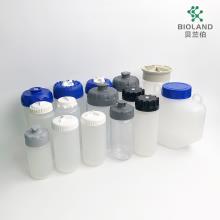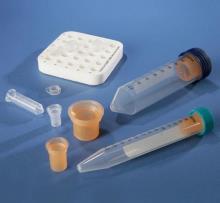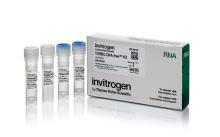|
Description: Human IL-8 (CXCL8) is a pro-inflammatory member of the CXC chemokine family. It is synthesized as a 99 amino acid precursor protein that is further processed into one of four isoforms, with the most common being 72 or 77 amino acids in length. IL-8(77) is secreted primarily by endothelial cells and is thought to be a less potent neutrophil activator than the other forms. It is present at high levels during fetal development, where it mediates angiogenesis rather than inflammation. The predominant form present in adults is IL-8(72), which is expressed by monocytes, macrophages, epithelial cells, and fibroblasts in response to inflammatory stimuli, environmental stress, and steroid hormones. IL-8(72) is essential for the activation and recruitment of neutrophils to sites of inflammation, and has also been found to influence T cell migration. Signaling occurs through the G-protein coupled receptors CXCR1 or CXCR2. IL-8 transcripts are often upregulated in tumors, and it is associated with tumor angiogenesis and metastasis. 靶标信息IL-8 (Interleukin-8) is a 72 amino acid pro-inflammatory CXC chemokine designated CXCL8, secreted by endothelial cells and monocytes, which acts as a major chemoattractant for neutrophils and also T cells and basophils. IL-8, first isolated from osteosarcoma cells, contains the ELR-motif (N-terminal Glu-Leu-Arg amino acid sequence) and signals through the CXCR1 and CXCR2 receptors. Cancer studies have demonstrated a role for IL-8 in the angiogenesis and growth of tumours. Previous nomenclature for IL-8 includes neutrophil activating protein 1 (NAP-1), granulocyte chemotactic protein 1 (GCP-1), monocyte-derived neutrophil-activating peptide (MONAP) and protein 3-10C. 仅用于科研。不用于诊断过程。未经明确授权不得转售。 |
无参数








 微信公众号下单更便捷
微信公众号下单更便捷